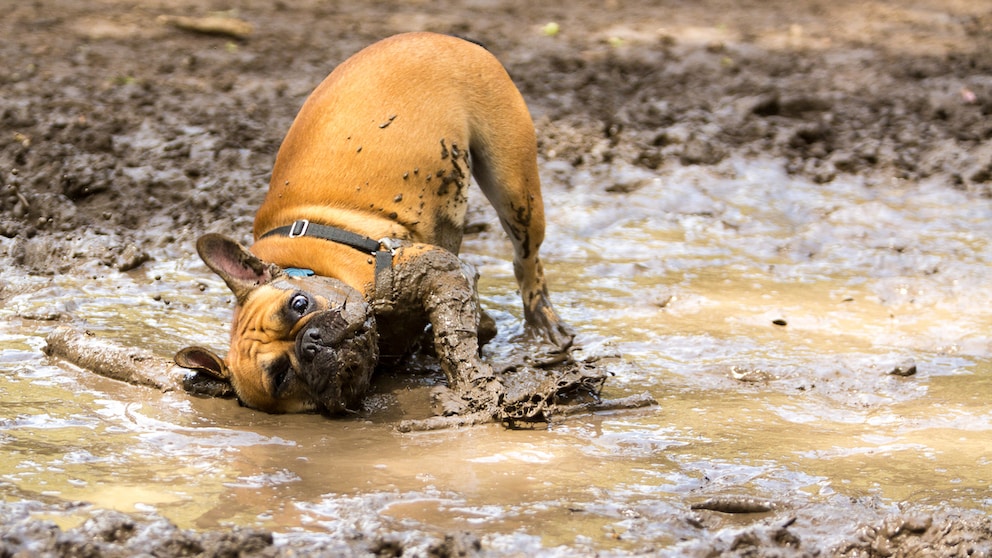July 11, 2024, 6:16 am | Read time: 4 minutes
Do you feel this way? You look into the jungle of training methods, with every trainer having their own “approach” and every association having their own methods: R+, positive reinforcement, “natural leadership”, anti-authoritarian education and cotton ball throwers.
Anti-authoritarian parenting, which originated in child education in the 1960s and 1970s, is currently experiencing a resurgence and is similarly being applied to dog training. “Education should be freed from the constraints and overbearing power of teachers so that it does not stand in the way of a child’s development.”1 When applied to dogs, this “approach” can often translate into owners saying, “But I don’t want to impose rules on my dog” or “But then I’m setting a limit.” This leads to complete despair amongst owners. The reason being that nobody knows what’s right anymore: What am I allowed to do? What is right, and how can my dog become socially competent and peaceful?
Setting boundaries is important
Does a dog have to know ‘sit’ or ‘down’? No, he can be a great dog and companion even without the ‘sit’ signal or command. And that’s where the problem lies today: we want to be nice and polite with our dogs. He should behave calmly, walk well on a leash, respond immediately to recall commands, and, ideally, not chase after joggers, cyclists, or other dogs during walks.
“But he only runs after cyclists or rabbits, he has never bitten one.” You may grin at this, thinking, that this is just the everyday life of a dog owner. But sometimes everyday life is not necessarily good or funny. However, a firm “no” or stop signal, and setting boundaries may be required from time to time. The problem seems to be that we are living out many of our shortcomings through our dogs: phrases such as “The dog should be free” and “I don’t want to put a leash on him, it restricts him” plus more, I encounter every day out on the streets. The truth is, clear communication with my dog is possible without resorting to harshness. I don’t have to spray my dog with water or jerk his thin lead. I simply assert myself.
More damage is being caused by anti-authoritarian training
This trend of ‘not enforcing’ appropriate behavior can be highly dangerous, especially in urban environments. “According to the German Insurance Association (GDV), dogs were responsible for more than 97,000 claims in 2019. The damage caused by dogs in Germany amounted to a total of around 86 million euros. “2 And the five most common types of damage included:
- Bites or scratches that caused injury to people or animals
- Property damage caused by the dog, e.g., destroyed furniture or damaged items of clothing
- Traffic accidents in which the dog and its owner are involved and potentially the cause of the damage to vehicles or persons
- Damage caused by a dog running and jumping around, e.g., broken flower pots or scratched floors
- Damage caused by the dog owner himself, e.g., if the dog escapes and causes damage while the dog owner was not supervising it.
Anti-authoritarian training for dogs can therefore be dangerous to other people, for example, in traffic situations. Therefore, consistent training should be prioritized. This should absolutely be non-violent. If you’ve been advised to throw watering cans or other objects at your dog, consider this an indication of your trainer’s incompetence.

PETBOOK inquires Hunter speaks out against the docking ban for hunting dogs: ‘It’s about the welfare of these animals!’

Dog etiquette 7 rules for dog owners to show courtesy

PETBOOK interview Dog researcher: “We have the wrong idea about dogs!”
Provide challenges and reward performance
Encourage your dog to work for his rewards, whether it’s a treat or a play session with you. This does not automatically mean depriving them of something. Instead, challenge them to do something and also try something out yourself, for instance, take a great treat or a great toy, show it to your dog without giving it to him and ask, “Can you show me something?”. Most dogs show a sit first. Then ask again: “Can you do anything else?”. And watch carefully to see how your dog shows that he can do more and that he wants to offer more.
Also, use this approach outside, so make sure you are clear and friendly. Even the journey to the play area with your dog can be used as a reward if your dog does something first. Respectful interaction between you and your dog requires mutual respect and adherence to rules. Dogs that are bored and lack proper training can become dangerous.

